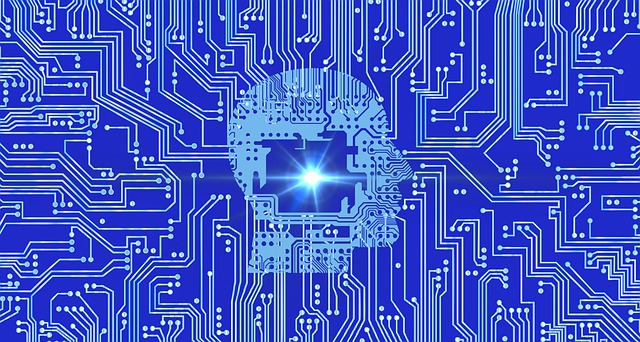The Psychological Power Behind Google Ads: Connecting with Consumers in the Digital Age
In the ever-evolving landscape of online marketing, Google Ads has emerged as a powerful tool that goes beyond mere visibility. It delves into the realm of psychology, tapping into the intricacies of human behavior to create compelling and effective advertising campaigns. This intersection of technology and psychology has given rise to a new era of digital marketing, where understanding the human mind is as crucial as mastering the algorithms.
The First Glance: The Power of Visual Appeal
In the fast-paced world of the internet, attention spans are shorter than ever. Google Ads, with its concise and visually appealing format, understands this well. The initial impact of an ad often relies on its visual elements, triggering a psychological response that happens within milliseconds.
Color psychology plays a significant role in shaping consumer perceptions. For example, red can evoke urgency and excitement, while blue instills trust and reliability. Google Ads strategically employs these color schemes to evoke specific emotions and guide consumer decision-making. The careful selection of images, fonts, and overall design is aimed at creating an immediate connection with the audience, influencing their perception of a product or service from the very first glance.
The Art of Persuasion: Cognitive Biases in Ad Copy
Beyond the visual appeal, the language used in Google Ads is a key player in the psychological game. Ad copy is crafted with precision to tap into various cognitive biases that influence decision-making. One such bias is the scarcity effect, where limited availability or a countdown timer creates a sense of urgency, compelling users to take immediate action.
Social proof is another powerful psychological trigger incorporated into ad copy. Testimonials, reviews, and user ratings build credibility and trust, assuring potential customers that others have had positive experiences with the product or service. By leveraging the bandwagon effect, Google Ads convinces users to join the satisfied community of consumers.
Personalization: Appealing to Individual Needs and Desires
The era of one-size-fits-all advertising is long gone. Google Ads harnesses the power of personalization, using data-driven insights to tailor ads to individual preferences. This level of personalization speaks directly to the individual’s needs and desires, creating a more intimate connection between the consumer and the brand.
Psychologically, personalized ads resonate more deeply with users. The mere mention of their name or the display of products based on their previous searches fosters a sense of familiarity. This taps into the reciprocity principle, a social psychology concept that suggests people are more likely to respond positively when they feel a sense of personal connection or favor.
The Journey from Click to Conversion: Streamlining User Experience
The psychology behind Google Ads goes beyond just the ad itself; it extends to the entire user experience. The journey from clicking on an ad to completing a conversion is a delicate process that requires a deep understanding of user behavior.
The concept of cognitive fluency comes into play here. Users are more likely to engage with an ad and complete a desired action if the process is smooth, intuitive, and requires minimal cognitive effort. Google Ads strategically streamlines the user experience, ensuring that every click is a step closer to conversion. By minimizing friction and optimizing landing pages, the platform aligns with the psychological principle that people are more likely to follow through with an action if it feels effortless.
This article on How Consumers Decide to Buy is thought provoking when it comes to your marketing funnels.
FOMO and Beyond: Leveraging Emotional Triggers
Fear of Missing Out (FOMO) is a psychological phenomenon that Google Ads skillfully incorporates into its strategies. Limited-time offers, exclusive deals, and special promotions create a sense of urgency, triggering the fear that if users don’t act quickly, they’ll miss out on something valuable.
Beyond FOMO, Google Ads taps into a spectrum of emotions, from joy and excitement to empathy and nostalgia. Emotional triggers are powerful tools that can leave a lasting impact on consumers. Ads that evoke emotion are more likely to be remembered, shared, and, ultimately, drive conversion.
The Feedback Loop: Analyzing and Adapting
One of the remarkable features of Google Ads is the ability to collect and analyze vast amounts of data. The platform creates a feedback loop that allows advertisers to understand the effectiveness of their campaigns and make data-driven decisions.
This analytical capability is not just about numbers; it’s about understanding the psychology of user behavior. By interpreting metrics such as click-through rates, conversion rates, and bounce rates, advertisers gain insights into what resonates with their audience. This iterative process of analysis and adaptation is crucial in fine-tuning campaigns to align with the ever-changing landscape of consumer psychology.
Google Ads as a Catalyst for Consumer Connection
In the digital age, where consumers are inundated with information, Google Ads stands out as a catalyst for meaningful connections. By seamlessly integrating psychological principles into its design, copy, and overall strategy, the platform transcends the traditional boundaries of advertising.
Understanding the psychology behind Google Ads is not just a matter of creating compelling campaigns; it’s about building relationships. The platform’s ability to evoke emotion, establish trust, and cater to individual needs makes it a dynamic force in the world of digital marketing. As businesses continue to navigate the complexities of online advertising, embracing the psychological nuances of Google Ads is not just a strategy—it’s a necessity for success in the digital age.
